Search California Arrest Records on Arrests.org CA
Accessing criminal and arrest records in California can be a complex process due to the numerous agencies and privacy regulations involved. Our California Records Page aims to simplify this process, providing step-by-step instructions on accessing various types of records quickly and easily. Whether you’re looking for probation records, parole information, warrants, or prison records, we’ve got you covered.

Understanding Criminal Records and Arrest Records in California
It’s essential to understand the distinctions between criminal records and arrest records in California. While juvenile records are confidential and inaccessible to the public, adult criminal records can only be accessed by law enforcement agencies and authorized organizations through the California Department of Justice (DOJ). Individuals can request their own criminal records for verification purposes, but accessing records belonging to others is prohibited.
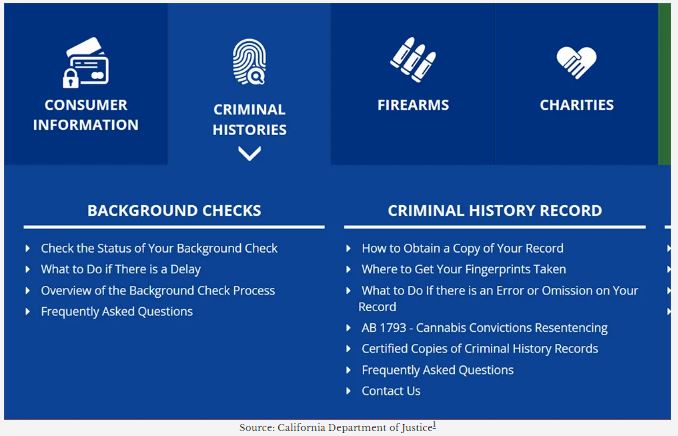
On the other hand, adult arrest records can be accessed by any citizen under the state’s Freedom of Information Act (FOIA), such as the California Public Records Act (CPRA). In some cases, certain information may be redacted to protect personal details, ongoing litigation, or other exempt information.
Residents of California have the privilege of accessing public records maintained by both state and local government entities. This means that arrest records and inmate information can often be obtained through local courthouses, sheriff’s offices, and the Department of Justice.

It’s important to note that criminal records are confidential and not disclosed to the general public unless an individual requests access to their own records. If you’re seeking guidance on accessing public records in California, you can refer to the California DOJ Guide.
If you’re interested in obtaining information about past and current arrests, you can request or view these records without specifying a particular purpose. This can be done by visiting local police and sheriff’s department offices or local courthouses in person, or by checking online if available.
It’s crucial to comply with federal rules and regulations, such as those set forth by the U.S. Equal Employment Opportunity Commission (EEOC) and the Fair Credit Reporting Act (FCRA), when requesting records, including criminal history and background checks. These regulations safeguard against discrimination and misuse of information.
Understanding Criminal Records Searches vs. Arrest Records
To determine if an individual in California has a criminal record or an arrest record, it’s important to understand the differences between these two categories. Juvenile records are confidential and inaccessible to the general public, while adult criminal records are accessible only to law enforcement agencies and authorized entities through the California Department of Justice (DOJ). Individuals can request their own criminal records for accuracy verification, but they cannot access records of others.
On the other hand, adult arrest records can be viewed by any citizen under state FOIA laws, including the California Public Records Act (CPRA). However, in some cases, certain information may be redacted to protect personal information, ongoing litigation details, and other exempt information.
Our comprehensive guide provides you with the information and resources you need to access California arrest records. Follow our step-by-step instructions and ensure compliance with legal requirements. Start your search today!
Guiding Users Through the Arrest Records Process
Step-By-Step Instructions for Accessing Arrest Records
Understanding the Legal Intricacies and Motivations Behind Record Checks
Unveiling the Secrets of Arrest Records: A Comprehensive Guide
Unraveling the Complexity of Arrest Records: A User-Friendly Approach
Unlocking the Power of Arrest Records: Navigating the Legal Maze
Mastering the Art of Accessing Arrest Records: Your Ultimate Guide
Discover the Hidden World of Arrest Records: Demystifying the Process
Unveiling the Truth: A Comprehensive Guide to Arrest Records
Accessing Arrest Records Made Easy: Your Step-By-Step Guide
Demystifying Arrest Records: A User-Friendly Guide to Unlocking Information
Exploring the Depths of Arrest Records: A Journey Through Legal Intricacies
Discovering California Arrest Records via County Jails & County Sheriff’s Offices: Access CA Mugshots
When it comes to accessing California arrest records and obtaining information about individuals currently incarcerated, the most reliable and comprehensive results can be found by utilizing resources at the county level. By reaching out to the local sheriff’s office and utilizing online county search tools, individuals can navigate the legal intricacies and motivations behind record checks with ease.
County jails in California, although under the jurisdiction of the California Board of State and Community Corrections, are administered by local sheriff’s departments. This means that individuals searching for arrest records or seeking to understand the reasons behind someone’s arrest can rely on the expertise and resources provided by these county law enforcement agencies.
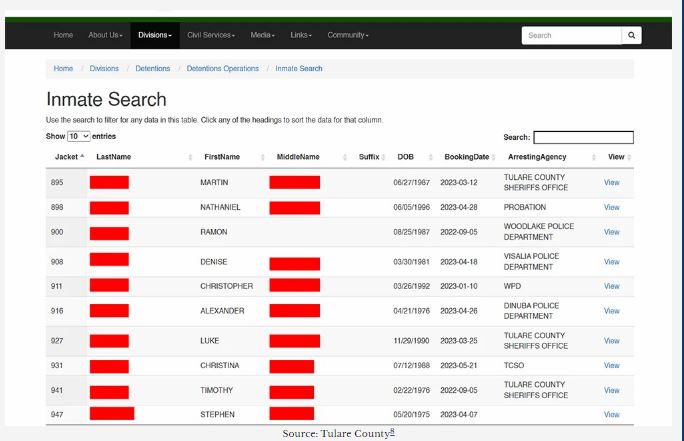
For instance, individuals looking for arrest records in Orange County have several options available to them. They can utilize the inmate search tool, contact the county sheriff’s office directly, or reach out to the local jail. To gain a deeper understanding of how to effectively utilize each of these resources and access various other county records, our detailed guide on Orange County public records can provide valuable insights.
Searching for Recent Arrests and Inmate Rosters in California’s Local Police Departments
When it comes to finding information about recent arrests in California’s city jails, it is crucial to contact the respective city police department as they are responsible for managing these facilities. If you’re unsure of the city, you can initiate your search at the county level and then narrow it down to the specific city.
It’s important to note that not all city police departments offer online inmate locator tools. In such cases, contacting the department by phone or visiting their office in person becomes necessary to inquire about an individual’s arrest status and whether they are being held in the city jail.
To locate California arrest records and city jail inmates, follow these steps:
- Conduct a Google search using the format “[City Name] California inmate search.” For example, if you’re looking for information about an inmate detained in South Pasadena, you would type “South Pasadena California inmate search.”
- Examine the search results to locate the official website of the city’s police department or law enforcement agency. These websites may end with “.gov,” but not always.
- For example, if you were searching for South Pasadena, you would find the City of South Pasadena’s Jail website in the results.
- Review the website to check for an inmate registry or search tool for recent arrests. In some cases, like South Pasadena, there may not be an online search tool. However, the Jail Information page may provide contact information, such as the South Pasadena Police Department’s (SPPD) phone number (626) 403-7270, where you can inquire about an inmate’s status.
- Utilize the online search tool if available by entering the inmate’s full name or ID number (if known). If not, you can call the police department’s non-emergency phone number to inquire about a specific inmate or arrest. Alternatively, you can visit the department’s office in person for inquiries.
If you encounter difficulties during your search or require assistance, consider seeking the help of a bail bondsman. They can assist you in determining whether an inmate is in a particular jail and guide you through the bail process.
Learn How to Reach Out to Inmates in California Jails and Secure Their Release
For individuals looking to contact jail inmates in California and assist in their release, it is essential to follow specific steps and guidelines:
- Inmate Communication: Friends, family, and interested parties can reach out to jail inmates during regular phone hours, typically between 8 a.m. and 9:45 p.m. at most locations. However, inmates may have restricted phone access for disciplinary reasons. All inmate phone usage is facilitated through Global Tel Link (GTL)/ViaPath. Outgoing calls must be either collect or prepaid and are subject to monitoring, except for calls to attorneys or ombudsmen. Relatives and other inmate contacts need to create a GTL account to receive calls.
- Bail Process in California: In the state of California, individuals are not held solely due to an inability to afford bail. Evidence of a threat to public safety is required to justify detention. Inmates can be released without a fee if evidence is lacking, but certain conditions, such as losing firearm access, may apply.
- Posting Bail for Inmates: Bail amounts and processes vary in California based on the alleged crime and the county of occurrence. However, it is important to follow the established procedures and guidelines to ensure a smooth and efficient bail process.
Posting Bail for an Inmate: A Step-by-Step Guide
When it comes to posting bail for an inmate, it’s crucial to follow the correct process to ensure a smooth and efficient experience. This guide will provide you with meticulous step-by-step instructions, shedding light on the legal intricacies and motivations behind record checks.
Confirm the Inmate’s Location
To begin, you’ll need to confirm the inmate’s location. This can be done by contacting the jail directly or utilizing a search tool on the sheriff’s department website. Make sure to gather important information such as the inmate’s full name, date of birth, and booking number. For instance, if you’re looking to post bail for an inmate in El Dorado County, visit the county sheriff’s department website or contact them directly for the inmate’s location.
Determine the Bail Amount
Next, it’s crucial to determine the exact bail amount. This can be done by checking the county search site, contacting the sheriff’s department or jail, or seeking assistance from a bail bondsman. For example, you can inquire about the bail amount for a specific inmate at a particular jail.
Select a Payment Method
Once you’ve determined the bail amount, you’ll need to select a method for paying bail. In California, there are three options available: cash bail (to be paid in full), bail bonds (requiring a fee and collateral), and property bail (using real estate as collateral).
Post Bail
After selecting a payment method, it’s time to post (pay) bail. This can be done either through a bail bondsman, who may charge a non-refundable fee, or directly to the jail.
Inmate Release
Once bail has been paid, the inmate will typically be released within 30 minutes to 4 hours, depending on the processing time.
A Guide to Searching for California (CA) Criminal Records
In California, criminal records are maintained by both county courts and the California Department of Justice. While these records are not accessible to the general public, individuals can request a copy of their records. Authorized law enforcement agencies, specific government officials, and approved employers designated by the Department of Justice have access to criminal records.
Locating Inmates in California State Prisons and Federal Penitentiaries
Access to California criminal records is typically restricted to individuals seeking their records. However, federal criminal records can be accessed through the Federal Bureau of Prisons (BOP) inmate search tool. This tool provides access to federal inmate records for individuals who were released after 1982.
For more comprehensive inmate information, individuals can visit their respective county police department or sheriff’s office. Mugshots can be accessed under the CPRA, as they are considered publicly available.
Utilizing the Federal Bureau of Prisons search tool can assist in locating federal prisoner residences both within and outside the state. Additionally, third-party people search platforms can offer valuable criminal history information.
Obtaining Your California Criminal Records: A Step-by-Step Guide
If you’re a California resident interested in obtaining a copy of your own criminal record, follow these steps to request your California Criminal History Report:
- Fill out the necessary request form online or in person.
- Pay the required fee for processing the request.
- Provide the necessary identification and supporting documents.
- Submit the completed request form and payment.
- Wait for the processing of your request and receive your California Criminal History Report.
An Application for Criminal History Report
Tailor-made for our arrest records website, this content segment provides step-by-step instructions for users to navigate the legal intricacies and motivations behind record checks.

To obtain a criminal history report, applicants must submit their applications along with a $25 processing fee payment to the Department of Justice. Additionally, they need to provide fingerprints through any of the Live Scan Fingerprinting Locations available statewide.
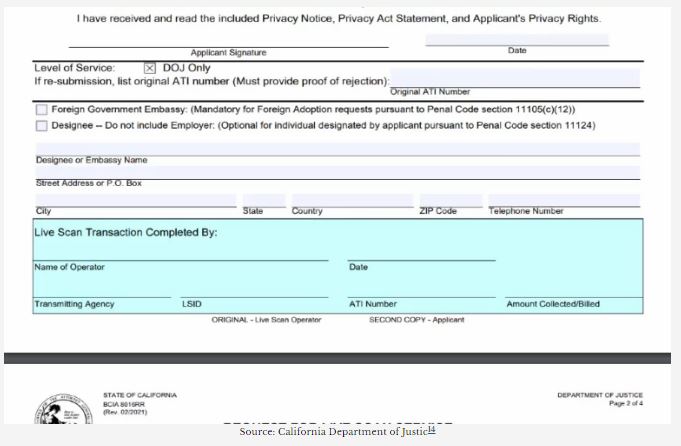
Authorized locations must complete their section of the form prior to the release of criminal records.
Applicants falling within specific categories can inquire about a fee waiver for the $25 application fee. However, they will still be required to cover the separate fingerprinting fee charged by the live scan service provider.
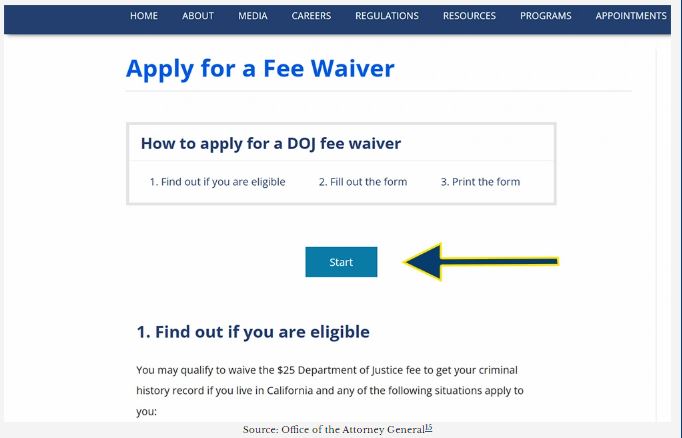
It’s important to note that certified copies of criminal records are exclusively accessible to law enforcement agencies, the Attorney General, and other authorized entities.
Determining Probation or Parole Status in California: A Guide
In California, differentiating between probation and parole status can be somewhat challenging due to the absence of a dedicated database or an online probation search tool. However, you can use the following guide to help you determine whether someone is on probation or parole in the state.
 The responsibility for conducting parole suitability hearings, nonviolent offender parole reviews, managing foreign prisoner transfers, and investigating requests for pardons and commutations of sentences in California falls under the purview of the Board of Parole Hearings (BPH).
The responsibility for conducting parole suitability hearings, nonviolent offender parole reviews, managing foreign prisoner transfers, and investigating requests for pardons and commutations of sentences in California falls under the purview of the Board of Parole Hearings (BPH).
The Bureau of Parole Hearings (BPH) operates under the jurisdiction of the California Department of Corrections and Rehabilitation (CDCR). To assist individuals in finding information related to parole status, the CDCR offers an online search tool known as the CDCR Public Inmate Locator System (CDCR PILS)18. Alternatively, individuals may also opt to contact probation or parole offices directly for assistance19.
How to Seal or Expunge Criminal Records in California?
California offers a relatively straightforward process for sealing and expunging criminal records compared to many other states. If you meet all the requirements and haven’t faced new charges or received a guilty conviction, misdemeanour arrest and conviction records automatically get sealed after one year. Likewise, most felony arrest and conviction records are also automatically sealed after four years of no further legal trouble.
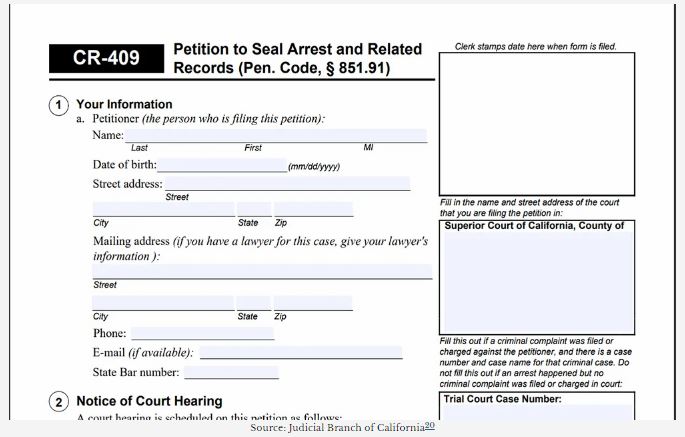
However, for serious or violent felons, records are not sealed automatically, but they can petition the court for sealing. This process requires action on their part. Offenders seeking record sealing must complete and submit Form CR-409, which will undergo review and approval or denial by a judge.
In contrast, individuals convicted of sex offences cannot have the offence that led to their registration expunged.
Those seeking to clear their prior criminal records, can refer to the “California Guide to Clearing Criminal Records,” which provides a comprehensive explanation of the entire process and the necessary steps to request dismissals. Here is an overview of the process:
- Complete the CR-180 Petition for Dismissal form.
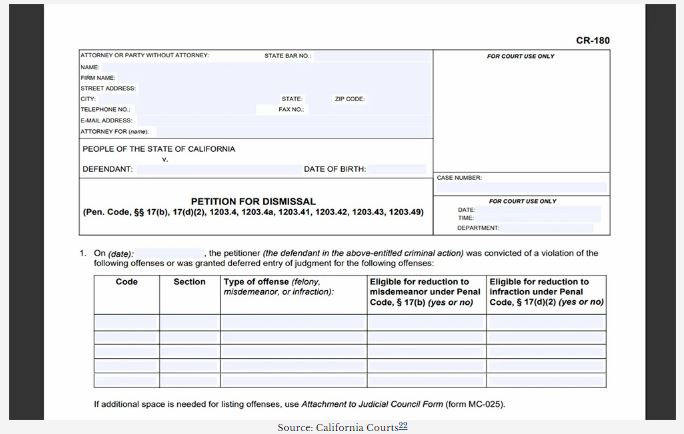
- Pay the relevant court fees or request fee waivers (refer to pages 16-28 in the Guide to Clearing Criminal Records).
- Deliver one copy of the expungement petition to the City or District Attorney, if mandated by the court.
- The court will render a decision on the expungement request within 3 months. If the petition is denied, you have the option to file a reconsideration request within 60 days or refile the petition at a later date.
Guide to Conducting an Active Warrant Search in California (CA Warrant Check)
Conducting an active warrant search in California often referred to as a CA warrant check, is a process that involves accessing official records to determine if there are any outstanding warrants issued for an individual’s arrest. To initiate this search, individuals can typically start by contacting the California Department of Justice (DOJ) or the local law enforcement agency in the county where the warrant may have been issued. Many counties also provide online resources or databases that allow for warrant searches. These databases may require inputting specific details such as the individual’s name, date of birth, and other identifying information. It’s important to note that warrant information is considered confidential, and access to this information may be restricted to authorized personnel. Additionally, individuals should exercise caution and ensure they have a legitimate reason for conducting a warrant search, as unauthorized searches may be illegal or subject to penalties. By following the appropriate procedures and utilizing the available resources, individuals can effectively conduct an active warrant search in California to ascertain if there are any warrants issued in their name or in the name of others.
Step-by-Step Guide to Conducting Arrest Record Checks
Are you in need of conducting an arrest record check? Look no further! Our arrest records website provides comprehensive and reliable information on how to navigate the legal intricacies and motivations behind record checks.
Determining Your Warrant Status
If you wish to check your warrant status, follow these simple steps:
- Submit your fingerprints and a $25 fee to the Department of Justice.
Please note that accessing arrest records maintained by the U.S. Marshals may not be possible through the WIN database. However, there are alternative methods to determine if there is an outstanding warrant for your arrest.
Checking Others’ Warrant Status
For individuals interested in checking the warrant status of others, please consider the following options:
- Contact local sheriff’s offices directly to inquire about active warrant databases.
- Visit the official websites of sheriff’s offices for potential warrant databases.
Many sheriff’s offices and department websites maintain lists of active warrants, providing you with the information you seek.
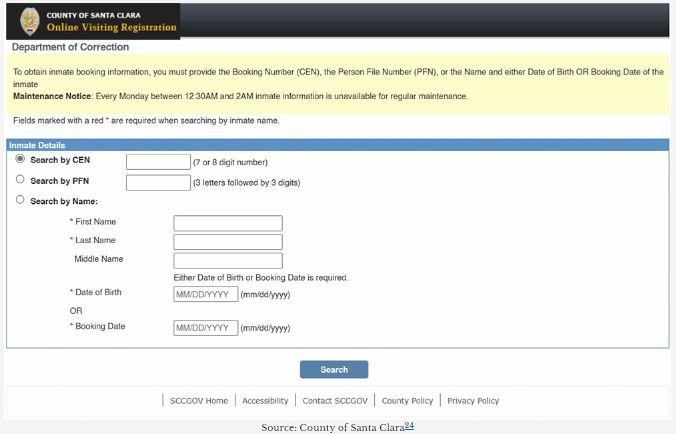
For example, the Santa Clara Sheriff’s Department website features an “inmate finder” tool that offers comprehensive inmate information, including arrest details, warrants, and corresponding bail amounts.
Moreover, you can obtain warrant details free of charge either in person or by mail from the Santa Clara Sheriff’s Office Records. Similar options are available for most counties across California.
For additional information on local warrant searches and efficient methods to access various county public records, refer to our comprehensive resource on accessing public information in Santa Clara County. This resource covers vital records, background checks, and criminal history research, among other types of records.
Understanding California Background Checks
In California, background checks are managed by the California Department of Justice. They serve various purposes, such as:
- Employment screening
- Firearm purchase assessments
- Housing application evaluations
- Adoption procedures
- Security clearance assessments
It’s important to note that professional background checks must comply with state and federal laws, and explicit authorization from the subject is required.
California conducts two levels of background checks:
- Level 1 Background Check: This level searches for criminal and employment history at the local county or state level based on the subject’s name.
- Level 2 Background Check: These comprehensive checks use the subject’s fingerprints for a nationwide search. They provide information on residences, employers, education, credit records, marital status, previous arrests, and detainments. Level 2 checks are typically required for specific roles, such as healthcare, childcare, elderly care, and high-level executive positions.
The California Department of Justice may conduct Level 1 Fingerprint Background Checks or forward fingerprints to the FBI for Level 2 checks.
When live scan fingerprinting is required, complete the BCIA 8016 Form and have your fingerprints scanned at authorized locations. Results are usually received within 48-72 hours unless further review is necessary.
To ensure fairness and protect individuals’ rights during background checks, laws such as the Fair Credit Reporting Act and the Equal Employment Opportunity Act prevent discrimination in professional assessments.
Personal background checks in California can be conducted without specifying a reason. However, the obtained information must not be used to harass, stalk, or harm the subject.
Verifying the Presence of Sexual Predators Nearby
In California, you can check the sex offender registry to determine the presence of sexual predators in your area. Follow these steps:
- Visit the California sex offender registry website.
- Enter your location details to search for registered sexual offenders nearby.
Stay informed and ensure the safety of your community by utilizing this valuable resource.
Step-by-Step Instructions for Accessing Arrest Records in California
When searching for arrest records in California, it is important to follow the proper procedures to ensure a smooth and successful search. By following these step-by-step instructions, you can navigate the legal intricacies and motivations behind record checks.
Visit the California Department of Justice (DOJ) Website
To begin your search, access the California DOJ’s website. This is the primary resource for obtaining arrest records in the state.
Request Arrest Records Online or In Person
Once on the California DOJ’s website, you have the option to request arrest records online or visit their office in person. Choose the method that is most convenient for you.
Contact Local Law Enforcement Agencies
If you prefer, you can also obtain arrest records from local law enforcement agencies, such as police departments or county sheriff’s offices. This is especially useful if you know where the arrests occurred.
Provide a Valid Reason for Your Request
Keep in mind that some arrest records may be restricted or confidential. In these cases, you may need to provide a valid reason for your request and follow specific procedures outlined by the California DOJ.
Follow Local, State, and Federal Laws
When conducting background checks for professional purposes, such as employment or housing, it is crucial to adhere to all relevant local, state, and federal laws. This includes compliance with the Fair Credit Reporting Act.
Frequently Asked Questions (FAQs)
How Can I Access California’s Arrest Records?
Accessing California’s arrest records typically involves contacting the California Department of Justice (DOJ). You can request arrest records through the California DOJ’s website or by visiting their office in person. Alternatively, you may obtain records from local law enforcement agencies, such as police departments or county sheriff’s offices, where the arrests occurred. Keep in mind that some records may be restricted or confidential, so you may need to provide a valid reason for your request and follow specific procedures.
Are Arrest Records Public Information in California?
In California, arrest records are generally considered public information. This means that members of the public can access them under the California Public Records Act. However, certain records may be restricted or confidential due to privacy, safety, ongoing legal proceedings, or pending charges. It is important to understand the regulations and procedures for accessing arrest records in California to ensure compliance with the law.
Guiding Users Through the Process of Accessing California Arrest Records
Experience a seamless and authoritative journey as you navigate the legal intricacies of obtaining California arrest records. Our step-by-step instructions will skillfully guide you through the process, shedding light on the motivations behind record checks.
Understanding the Contents of California Arrest Records
Delve into the wealth of information contained within California arrest records. Discover details such as the date and location of the arrest, personal information of the individual involved, charges filed, and pertinent information about the arresting officer. These records may also encompass court-related information, including court dates and case outcomes. It’s important to note that an arrest does not equate to guilt, as these records are distinct from conviction records.
Efficiency in Obtaining California Arrest Records
We understand the value of your time. While some records can be accessed instantly online, others may require a formal request, which can take a few weeks to process. To ensure an accurate estimate of processing time, we recommend contacting the specific agency or department from which you are requesting the records.
Accessing Someone Else’s Arrest Records in California
While it is possible to request access to someone else’s arrest records in California, privacy protections are in place. To proceed, you may need to provide a valid reason for your request and follow specific procedures outlined by the California Department of Justice or the relevant law enforcement agency. It’s important to note that sensitive information, such as Social Security numbers, is often redacted to safeguard privacy rights. Additionally, certain records, such as juvenile arrests or sealed cases, may be inaccessible to the public.
